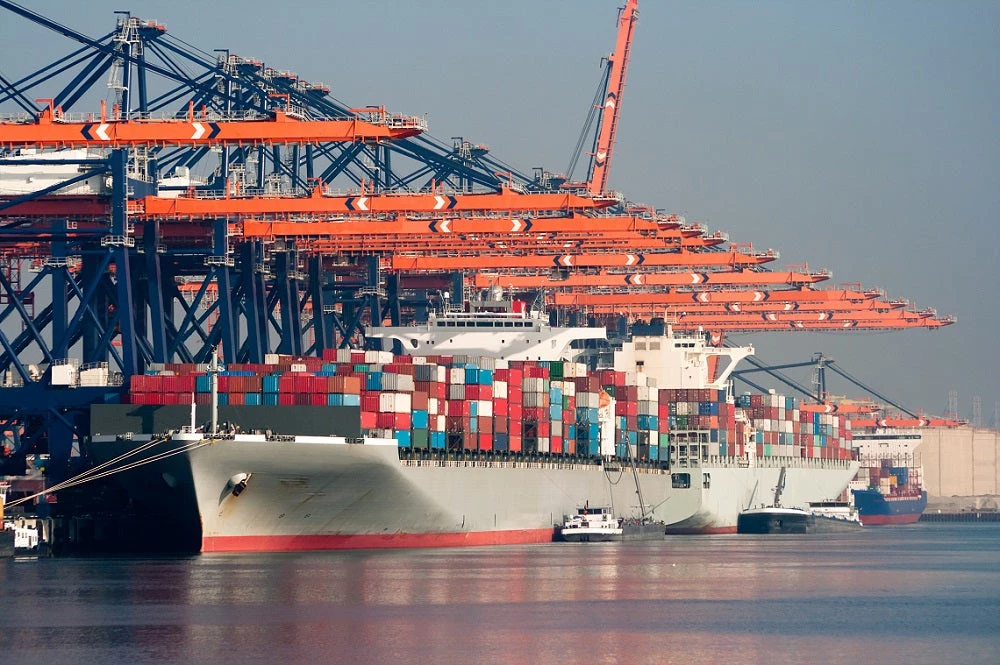
Have you ever wondered how the clothes or electronics you buy made their way to your local shopping mall? They've likely crossed borders and sailed across oceans, and one important pit stop in their journey is a seaport. Ports are more than just docking points for ships; they are complex, busy hubs critical for the quick movement of international cargoes. Managing a port is a complex operation that involves various private parties and government agencies. And here's where technology steps in to make everything smooth sailing.
How does a PCS differ from the other digital solutions used by ports? Imagine a digital meeting room where everyone who matters in port operations—terminal operators, shippers, the port authority, customs, and more—can talk to each other. Except, instead of talking, they’re swapping essential information digitally. This setup dramatically reduces the paperwork and administrative red tape often associated with port logistics, leading to quicker decisions and streamlined operations.
When we zoom out to the broader scope of international trade, a PCS is the linchpin that can make global supply chains more resilient against shocks. The more information international logistics and supply chain companies share, the better they can adjust to unforeseen obstacles. And for low- and middle-income countries, a PCS serves as an advanced trade facilitation mechanism that enhances the logistics connectivity of international trade flows. And a Port Community System is a potentially big step on the road toward greater prosperity through trade: As efficiency improves, so does a port’s capacity , allowing more traffic to pass through each day.
Looking at the numbers, we see that a PCS has measurable benefits for consumers, businesses, and the environment. For instance, in the Netherlands, the PCS system known as PORTBASE has reduced annual costs for businesses involved in logistics by €245 million. This is not just a boost for the Dutch economy but also improves operating conditions for the port community at a micro-economic level. By allowing truckers to know exactly when their cargo is ready for pick-up, the same system eliminated the need for 30 million kilometers of truck movements to and from the port and considerably reduced the environmental impact of the freight forwarding industry.
Ports that use a PCS have increased the speed of their operations. Time, as they say, is money, and nowhere is this truer than in international trade. Imagine waiting for days just to get cargo clearances while your perishable cargo is being ruined and your clients complain. Paperwork delays can be a nightmare, but a PCS virtually erases this problem. Take the Port of Cotonou in Africa. There, PCS implementation led to a jaw-dropping reduction in dwell time for large trucks, from 269 hours to a mere three hours, back in 2012.
Another standout feature of a PCS is real-time tracking. Imagine being able to see the exact status of your international shipments just as you can see when your pizza delivery is around the corner. A PCS makes this possible. The PCS in Djibouti, for example, provides a comprehensive, 360-degree view of cargo movements, offering detailed insights not only in Djibouti but also for cargo moving into neighboring Ethiopia.
And as we grow increasingly conscious of our environmental footprint, the PCS will become ever more relevant. Dubai’s PCS helped avoid 12.74 million physical visits of freight forwarders and other logistics service providers at the port, and a mind-boggling 42.47 million paper exchanges were shifted to digital, equivalent to saving approximately 1,700 metric tons of CO2 emissions. That’s like taking 347 cars off the road for an entire year!
To work effectively, a PCS should be well integrated with other, existing systems in the port. For instance, many ports have already installed trade single windows, which allow data sharing among Customs and other border inspections agencies. The Democratic Republic of Congo (DRC) sets a good example in this regard. Here, the National Multimodal PCS was designed to work seamlessly in conjunction with the National Single Window for Trade, ensuring that the two systems are interconnected and complement each other.
Yet many low- and middle-income countries face technical and financial constraints to the adoption of PCS. That helps explain why, among the world’s ports that use the platform, just 16 percent are in low and middle-income countries, while 84 percent are in high-income countries. The digital gap is likely to widen as emerging technologies like artificial intelligence and cloud computing continue to advance.
International organizations can help close the gap with technical support and financing. For ports considering the adoption of PCS, a forthcoming report by the World Bank and the International Association of Ports and Harbors “Port Community Systems: Lessons from Global Experience,” offers a step-by-step how-to guide. Governments will also play an essential role in developing a comprehensive blueprint for PCS implementation that covers various aspects like governance, financing models, and legal regulations.
Port Community Systems are the future of port digitalization. They are not just a technological upgrade; they are a powerful tool that has the potential to revolutionize international trade and, by extension, global economic structures. It’s no coincidence that ports with the highest scores on the World Bank’s Logistics Performance Index—an important competitiveness indicator—have all adopted the system, while most of the laggards have not.
That is why less developed countries should act fast. If they don't start using these systems soon, they risk missing out on big opportunities. The good news is that financing and technical support are available to help them reap the economic benefits of 21st Century, digitally driven trade.
This work was supported by the World Bank with funding from the Trade Facilitation Support Program (TFSP). The TFSP is funded by nine donor partners: Australia, Canada, the European Commission, the Netherlands, Norway, Sweden, Switzerland, the United States, and the United Kingdom. This initiative provides assistance to countries seeking to align their trade practices with the World Trade Organization Trade Facilitation Agreement (WTO TFA).
Related content:
Fiji is digitalizing trade processes, helping firms expand in new markets and hire more workers
Boosting trade and economic development through better logistics
Digital certification makes cocoa traders in Côte d'Ivoire more competitive



Join the Conversation
I have many ideas, but the state did not care about them. New and very useful ideas
PCSs are Ideal only when trading partners are assumed to be holy something that is next to impossible. Competition in the age of mental fatigue due to abuse of drugs, privatised assets and depletion of stocks of raw materials in certain regions following the end of colonization, entails engaging dubious schemes to stay on top of everybody else even when you don't have much to offer. Port Communication... Systems therefore facilitate information gathering that is abused to undermine contenders. Internet is unsecure and trade has to be unfair to make sense. Your supplier should never know your profit margin lest they act to grab the benefits themselves. Besides digital packages are developed not only to improve efficiency but also to make money. Certain going concerns thrive on disinformation to tax authorities while communication barrier protected economies that would not otherwise make it to the top. Viewed from the other side of the coin PCSs are detrimental to certain aspects of trade.
Read more Read less